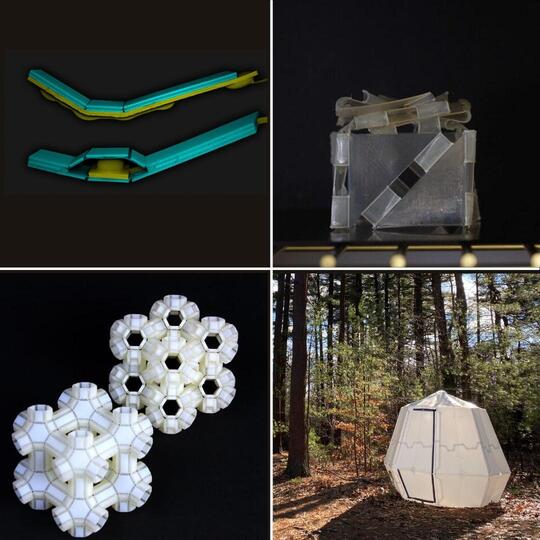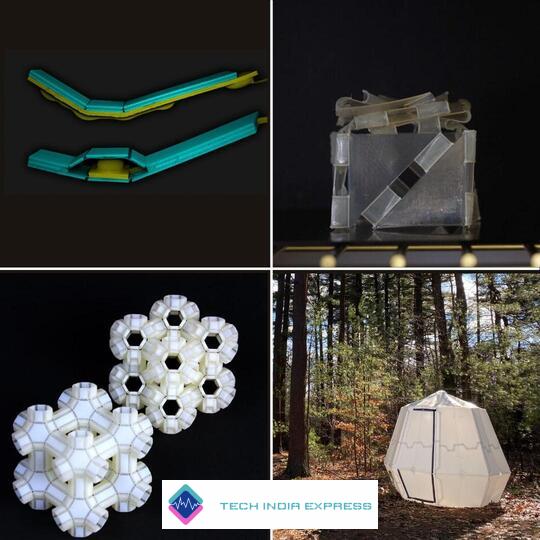The US Department of Defense (DoD) has awarded Georgia Tech with two 2022 Multidisciplinary University Research Initiative (MURI) awards totaling around $14 million for programmable multi stable origami.
More from the News
One of the projects, titled Programming Multi stable Origami and Kirigami Structures via Topological Design, looks at how principles from the art of paper folding can be used in conjunction with 3D printing to design lightweight and flexible structures capable of changing shape. The aim is to enable structures that can transition between a wide variety of stable geometries to perform specific actions or adapt to ever-changing environmental conditions.
The work is expected to have applications in everything from 3D printed multifunctional robotics to morphing bridges and collapsible radiofrequency components such as antennae.

The MURI awards
MURIs are awarded as part of a highly competitive DoD program designed to support teams of researchers that conduct work that may one day be applied in the defense sector. For the latest round of MURIs, the DoD awarded 28 US-based research teams a total of $195 million.
Simon Sponberg, a Dunn Family Associate Professor of Physics and Biological Sciences, explains, “MURIs were originally training grants for the DoD to develop the next generation of scientists who would make progress. This funding will allow us to have postdocs and graduate students across all six labs and disciplines working together tightly and creating a community.”
Origami for soft robotics and beyond
In the art of origami, the goal is to transform a flat square piece of paper into a sculpture using combinations of carefully placed folds. Anyone that’s into origami will be able to tell you that the use of glue, cuts, and rips is generally frowned upon. However, designs that do use cuts are referred to as kirigami.
So how do origami and kirigami mesh with 3D printing? One of the most obvious fields is that of soft robotics, where programmable folds and actuation mechanisms are commonly used to create 4D printed robots that change shape over time. Depending on where these folds are placed, a robot can be made to roll, climb, walk, and grip objects.
Multi-stable origami structures have highly complex mechanical behaviors, owing to the sheer number of folds and forces affecting one another. As part of the project, the researchers will first work to develop comprehensive mathematical models to characterize and program these behaviors.
Then, they hope to design their own 3D printing and advanced manufacturing processes to integrate sensing and actuation into these structures. Finally, the team intends to develop experimental test beds to evaluate and optimize their origami-based designs.
“This project benefits from Georgia Tech’s ability to develop tight, powerful connections between engineering advanced technologies and developing universal, mathematically rigorous physical theories,” said Zeb Rocklin, Georgia Tech Assistant Professor. “We’ll be starting from concepts that anyone can get a sense of by looking at or feeling a piece of origami and using robotics and multifunctional 3D printing to create complex, flexible and robust dynamical structures that can do things nobody has ever seen before.”
Beyond just basic 3D printed robotic devices, the work will be adapted to hybrid soft pop-up actuators, materials with transformable properties, foldable bulletproof shields, and temporary structures such as inflatable shelters for military personnel.
Working alongside Georgia Tech’s Rocklin will be Harvard University Professors Katie Betoldi, Jennifer Lewis, L. Mahadevan, and Robert Wood, and University of Pennsylvania Associate Professor Eleni Katifori.

Examples of potential origami-inspired multifunctional structures include a 3D printed soft robotic system (top right) and transformable materials (bottom left). Image via Harvard Unversity.
Delving into 3D printed soft robotics
The world of 3D printed soft robotics is an exciting area of research in the academic sphere. Earlier this year, researchers from China’s Harbin Institute of Technology 3D printed a graphene-oxide soft robot capable of moving backward and forwards when exposed to moisture. The scientists combined Direct Ink Writing and constrained drying techniques to fabricate the soft robot, and were able to overcome the porosity and shrinkage hurdles previously observed when 3D printing graphene-oxide objects.
Elsewhere, researchers from Tianjin University, China, recently 4D printed a self-propelling soft robot capable of roaming around on its own. The tube-shaped robot is made of a material called a liquid crystal elastomer, and it self-assembles when in contact with heat. The device leverages cleverly programmed fold patterns to induce strain within its own body, which enables it to roll over like a log.
Subscribe to AM Chronicle Newsletter to stay connected: https://bit.ly/3fBZ1mP
Follow us on LinkedIn: https://bit.ly/3IjhrFq
Visit for more interesting content on additive manufacturing: https://amchronicle.com/


